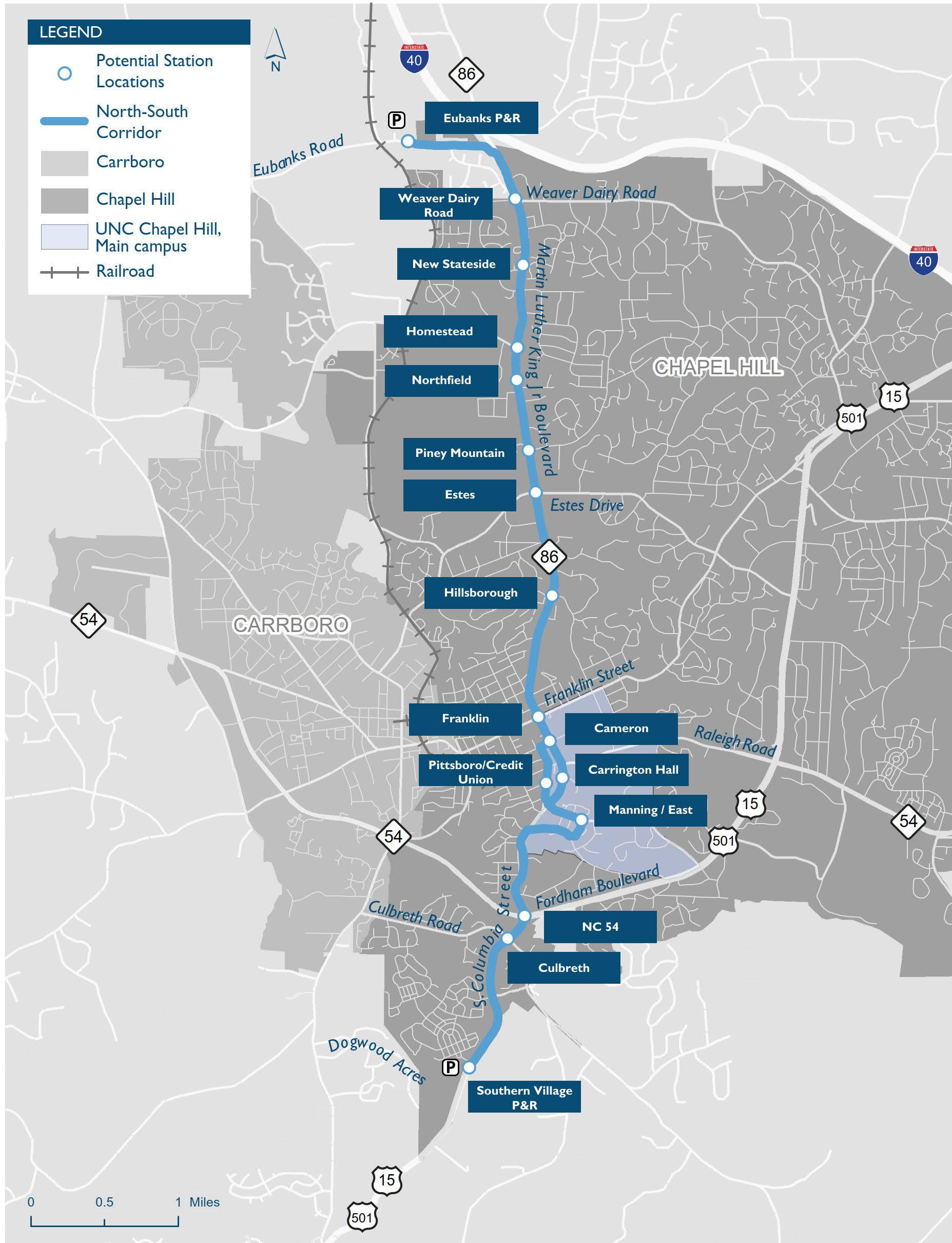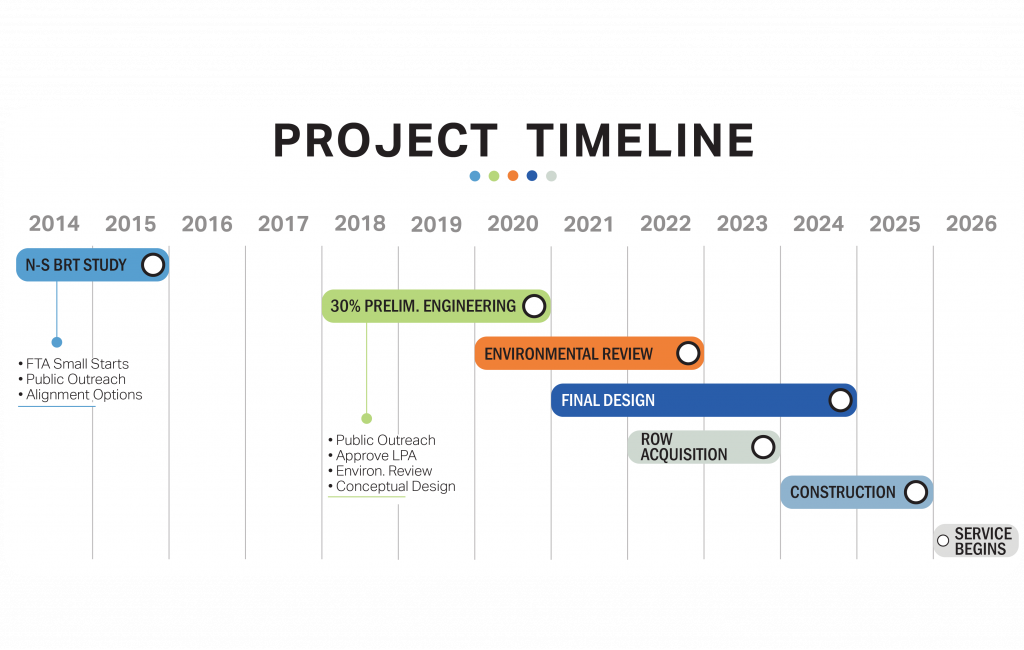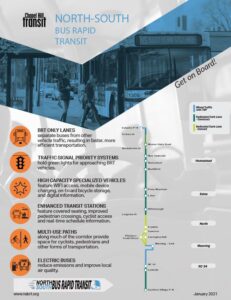[rev_slider alias=”homev2″]
What is the North-South BRT Project?
The Town of Chapel Hill’s North-South Bus Rapid Transit (N-S BRT) is the planned 8.2-mile line along one of the town’s busiest and most vital thoroughfares stretching from Eubanks Road in the north to the popular Southern Village in the south. As the region’s first BRT system, N-S BRT will connect employees, students, residents, and visitors to their regional connections and local destinations. Click here to learn more about the project’s history.
BRT combines high-capacity buses with exclusive traffic lanes and traffic signal priority to decrease travel times and improve the rider experience. BRT is efficient and enhances transit service by providing more frequent buses, shorter travel times and more reliable service.
Want more info on the BRT Station Locations? [click here]

Want to know more about BRT? Check out these videos! [click here]
Through several opportunities of community meetings in 2018 and 2019 [click here for more details], Chapel Hill Transit learned that the public was particularly interested in the BRT bus lanes, station locations, and bike and pedestrian access and safety. CHT, the Transit partners, and Town Council took this public input into consideration when developing and selecting the final Locally Preferred Alternative (LPA), which was adopted by the Town Council in June 2020. Want more info on the LPA? [click here]

Why BRT?
Cities around the country are launching BRT systems to improve transit reliability, shorten travel times, reduce congestion, and support economic development.
- BRT Only Lanes separate buses from cars, allowing for faster, more efficient transportation for everyone.
- Traffic Signal Priority systems hold green lights longer for approaching BRT vehicles.
- High Capacity, Specialized Vehicles accommodate more riders than traditional buses and feature amenities such as onboard wireless internet and more comfortable seating than traditional buses.
- State-of-the-Art Transit Stations provide more amenities for transit riders including covered seating, improved pedestrian crossings and cyclist access and real-time schedule information.
- Improved Air Quality reduces traffic on roadways and mitigates air pollution.
How are cities and towns across the country using BRT to improve transit service, ease congestion and address environmental concerns?
Below is a short list of smaller U.S. cities that have launched BRT to improve transit in their communities.


